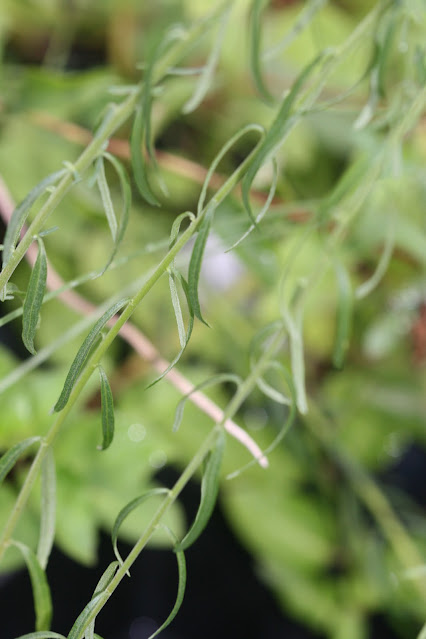Willowleaf aster (Symphyotrichum praelatum) is an herbaceous perennial wildflower native to only five counties in the Florida Panhandle, but common to nearly every state in the eastern two-thirds of the U.S. Throughout this region, it is most common in open to partly shady savannas in moist soil, though it is adaptable to a variety of sites. Willowleaf aster dies back to the ground in winter and reemerges again in spring; eventually reaching a mature height of 4-6 feet on stout stems. This species can spread aggressively to form dense colonies over time. As its common name implies, it is characterized by its willow-like leaves that alternate along the stems. Each leaf is 3-5 inches long and no more than 3/4's inches wide.
The numerous flowers are produced in early fall. They are in various shades of lavender though white forms are sometimes produced. Numerous thin ray petals surround a yellow central disc. Like all asters, the blooms are especially attractive to pollinators and the plants serve as a host for the pearl crescent butterfly. I am currently experimenting with this species here in west-central Florida. As a landscape plant that suckers freely, it should form striking colonies that would create great interest in a large open pollinator garden. I'm hoping to see that by next (2024) fall. Willowleaf aster has never been propagated by native nurseries affiliated with FANN - the Florida Association of Native Nurseries, but it is sold by native nurseries north of Florida.








